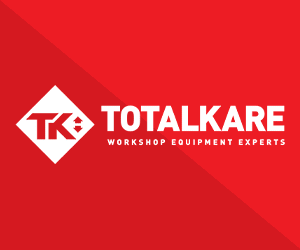Is convenience the key to rising bus patronage?

Think about other modes of public transport: Train stations have real-time passenger information as do airports. Do we see people checking an app on their mobiles to find out which gate or platform they are on, or do they check the information boards that provide real-time information?
Robert Bicket, Chief Executive at Papercast, says that providing real-time information will help improve the customer experience, and could be the difference between getting the bus or getting a taxi.
Customer experience
Before the rise of advanced technology, a bus was simply used to get from A to B, now passengers are looking at the bus as a whole experience.
They are expecting to see charging points, whether that be USB ports or wireless charging, and having wi-fi onboard has become the norm, for both short and long services.
The uncertainity of not knowing how far away a bus is will more likely dissuade users, says Papercast. Therefore, providing real-time passenger information removes this barrier and will encourage passengers to wait for the bus instead of being discouraged by having to wait for an unknown length of time and opting, instead, to call a taxi.
Since being installed in London, real-time information has assisted in a 6% increase in ridership, according to National Centre for Transit Research’s Enhancing the Rider Experience Progress Report.
Papercast says: “You need to improve the customer experience and service utilisation. You know that real-time passenger information demonstrably increases the perception of service standards. With smart transport information strategies defining the future, going digital is your only option.”
How can Papercast help?
In terms of how far the bus stop has evolved over the years, Robert explains that it has evolved to some extent – but it has been a “slow” progression.
Papercast is a world leader in e-paper solar-powered outdoor cloud-connected display systems and is based on the principal of getting the right information at the right time across multiple channels. Ultimately, it answers a passenger’s most important questions: What bus should I take? When will it arrive? How long will my journey take? Is there a delay?
“Digital signage is dynamic, speedy and inexpensive compared to conventional static signage. It is ideal for firms that want to more effectively engage their audience, improve the user experience and get targeted messages to customers on time,” the company says.
Robert adds: “The systems have a variety of potential applications across many sectors, but Papercast specialise in the transport industry, specifically in bus stops.”
Papercast uses technology known as e-paper, which is best known for its use in Amazon’s Kindle e-reader. The technology of e-paper is down to a company called E Ink.
One of the ways Papercast has tried to help evolve the bus stop is by establishing its reason for getting left behind, while train stations and airports progress with advanced technology. One of the reasons, Robert says, is due to bus stop predominantly being outside. They lack power sources and will encounter harsh weather conditions. But Papercast has a solution.
E-paper brings with it many advantages, one being that it is extremely low-powered. Papercast’s system is solar powered, and will run all year round, come rain or shine and will even adjust to night time.
The system

Papercast have a range of bus stop displays available and all come in different sizes as Standalone or Open Frame units.
The Standalone is a ruggedised IP65 fully stand-alone wireless, solar-powered e-paper display that is supplied in an aluminium enclosure with toughened front glass, designed for easy installation to an existing bus stop pole or shelter wall. These come in three different sizes, 13in single, 13in double or 13in triple.
The Open Frame displays offer the same wireless and solar-powered capabilities, but are designed to offer the ultimate flexibility to enable installation within the the customer’s own street furniture, or as stand alone displays. Open Frame is available in five different sizes: 13in display, 32in display, 42in display, 23in display (wide) and 57in display (wide).
All displays are available with optional night-time illumination, text to speech module and interactive function, which includes four customisable buttons allowing the user to move between different information and languages.
“Papercast delivers an innovative, future-proof digital standard that remains relevant in the face of technological advancements in hardware and software,” says Robert.
Its displays not only improve the passenger experience, providing operators with measurable ROI, but it’s also changing the face of the humble bus stop – something that is long overdue.
About Papercast
Papercast was launched in March 2016 and is the pioneer behind e-paper bus stop information.
It was redesigned in July 2017.
It’s a privately owned company with four people owning the business. Its head office is based in london, and all its team of 65, other than eight in the UK, are based in two cities in Slovenia.
It currently has 120 active projects worldwide.

























